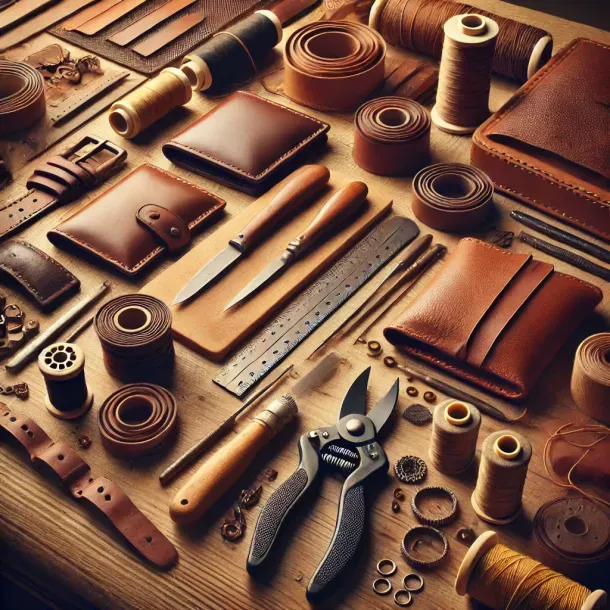Crafting with Recyclable Materials: Creating Beauty from Waste
Crafting with Recyclable Materials: Creating Beauty from Waste
In a world where environmental consciousness is increasingly important, finding creative ways to repurpose waste materials has become a popular and impactful practice. One such avenue is crafting with recyclable materials, where discarded items are transformed into beautiful and unique creations. In this article, we will explore the art of crafting with recyclable materials and showcase the endless possibilities of creating beauty from waste.
The Importance of Recycling
Recycling is a crucial step in waste management that helps reduce the strain on our environment. By recycling materials like paper, plastic, glass, and metal, we can conserve natural resources, reduce energy consumption, and minimize landfill waste. Crafting with recyclable materials takes recycling a step further by repurposing these items into new and visually appealing creations.
Inspiring Creativity
Crafting with recyclable materials is not only environmentally friendly but also sparks creativity. It challenges us to see the hidden potential in items that would otherwise end up in the trash. By repurposing and transforming these materials, we give them a new life and a chance to shine in unique and unexpected ways.
Exploring Recyclable Materials
Recyclable materials come in various forms, each with its own potential for artistic expression. Let’s explore some common recyclable materials and how they can be repurposed:
- Paper and Cardboard: Old newspapers, magazines, and cardboard boxes can be transformed into beautiful paper mache sculptures, intricate quilling designs, or even stunning wall art.
- Plastic: Plastic bottles, containers, and caps can be transformed into colorful flower pots, jewelry, or even woven baskets. By melting down plastic, it can be reshaped into unique and durable sculptures or decorative objects.
- Glass: Glass bottles and jars can be transformed into elegant vases, candle holders, or even mosaic artwork. By breaking and reshaping glass, artists can create one-of-a-kind stained glass pieces or intricate glass mosaics.
- Metal: Old metal cans, bottle caps, or discarded cutlery can be used to create whimsical sculptures, garden art, or intricate jewelry pieces. With a little creativity and some basic tools, metal can be transformed into stunning works of art.
Techniques and Inspiration
Crafting with recyclable materials encompasses a wide range of techniques and styles. Here are a few popular techniques to explore:
- Upcycling: Upcycling involves repurposing materials without changing their fundamental properties. For example, transforming an old ladder into a bookshelf or turning wine corks into coasters. Upcycling encourages us to reimagine the potential of discarded items and give them new purpose.
- Mosaic: Mosaic art involves arranging small pieces of recycled materials, such as glass, tiles, or broken ceramics, into a larger pattern or image. The result is a visually striking and textured artwork that breathes new life into discarded materials.
- Paper Crafting: Paper-based crafts include origami, paper cutting, and decoupage. By using recycled paper, old magazines, or discarded maps, artists can create intricate and visually captivating designs.
- Textile and Fabric Crafts: Old clothes, fabric scraps, or worn-out linens can be repurposed into quilts, rugs, or even fashionable accessories. By sewing, knitting, or crocheting with recycled textiles, artists can create unique and eco-friendly creations.
Benefits of Crafting with Recyclable Materials
Crafting with recyclable materials offers numerous benefits beyond the environmental impact. It encourages resourcefulness, stimulates creativity, and promotes a sustainable mindset. It can also serve as a meaningful and fulfilling hobby, allowing individuals to express themselves artistically while contributing to a greener future.
Engaging the Community
Crafting with recyclable materials can be a communal activity that brings people together. Organize workshops, classes, or craft fairs to share techniques and ideas with others. Collaborate with local schools, community centers, or environmental organizations to raise awareness about recycling and inspire others to explore their creativity through crafting with recyclable materials.
Embracing Imperfection
Crafting with recyclable materials allows for unique and imperfect creations, embracing the beauty of imperfections. Each piece carries its own story, reflecting the materials used and the creativity of the artist. Embrace the unexpected outcomes and quirks that arise from working with recycled materials, as they add character and authenticity to the final artwork.
Promoting Sustainable Living
Crafting with recyclable materials goes hand in hand with promoting sustainable living. By incorporating repurposed and upcycled items into our daily lives, we reduce waste and foster a culture of conscious consumption. It serves as a reminder of the importance of making environmentally responsible choices in all aspects of life.
Education and Awareness
Crafting with recyclable materials provides an excellent opportunity for education and awareness about the importance of recycling and sustainable practices. Through workshops, tutorials, and educational resources, individuals can learn about the environmental impact of waste and discover creative ways to repurpose materials. By actively engaging in crafting with recyclable materials, people gain a deeper understanding of the value of recycling and become advocates for sustainable living.
Economic Benefits
Crafting with recyclable materials can also have economic benefits. By repurposing materials that would otherwise be discarded, individuals can save money on art supplies or home decor items. Instead of purchasing new materials, they can find creative solutions by utilizing what they already have or sourcing recyclable materials from local recycling centers or thrift stores. This not only reduces expenses but also promotes resourcefulness and reduces the demand for new products.
Cultivating Mindfulness and Gratitude
Engaging in crafting with recyclable materials encourages mindfulness and gratitude for the resources we have. It prompts us to appreciate the value of the materials around us and the potential they hold. By being mindful of the waste we generate and actively seeking ways to repurpose it, we develop a greater sense of responsibility towards our environment. Crafting with recyclable materials serves as a reminder to be grateful for the Earth’s resources and to tread lightly on the planet.
Inspiring Innovation
Crafting with recyclable materials fosters innovation and creativity. By challenging ourselves to think outside the box, we can discover new uses for discarded items and pioneer innovative techniques. This creativity extends beyond the realm of crafting, as the problem-solving mindset cultivated through repurposing materials can inspire innovation in other areas of life. It encourages us to question the status quo and find sustainable solutions to everyday challenges.
Building a Circular Economy
Crafting with recyclable materials aligns with the principles of a circular economy. In a linear economy, resources are used, disposed of, and replaced with new ones. However, a circular economy aims to minimize waste by keeping resources in use for as long as possible. By repurposing and upcycling materials, we contribute to closing the loop, reducing the need for virgin resources, and minimizing the environmental impact of production and disposal.
Environmental Advocacy
Crafting with recyclable materials allows individuals to become environmental advocates in their communities. By showcasing their creations and sharing their process, they inspire others to reconsider their relationship with waste and encourage sustainable practices. Through art exhibitions, social media platforms, or local events, these crafters can raise awareness about the beauty and value of recycling and inspire others to join the movement.
Reducing Landfill Waste
Crafting with recyclable materials directly reduces the amount of waste that ends up in landfills. By repurposing and transforming materials that would typically be discarded, we extend their lifespan and divert them from the waste stream. This not only reduces the strain on landfills but also reduces the environmental pollution associated with waste disposal.
Personal Expression and Customization
Crafting with recyclable materials allows for personal expression and customization. Each piece created has a unique story, reflecting the artist’s creativity and style. It offers an opportunity to make one-of-a-kind items that cannot be found elsewhere, adding a personal touch to our surroundings and allowing us to express ourselves artistically.
Encouraging a DIY Culture
Crafting with recyclable materials promotes a do-it-yourself (DIY) culture, empowering individuals to take control of their creative pursuits. It encourages self-sufficiency, resourcefulness, and independent thinking. By engaging in DIY projects, people gain a sense of accomplishment and fulfillment, knowing they have created something beautiful and meaningful with their own hands.
Social Impact
Crafting with recyclable materials can have a positive social impact as well. By engaging in this practice, individuals can support local communities and organizations focused on recycling and upcycling initiatives. They can collaborate with artisans or social enterprises that specialize in crafting with recyclable materials, thereby contributing to job creation and sustainable livelihoods. By purchasing or promoting these handmade creations, individuals can support a more ethical and environmentally conscious economy.
Mindful Consumerism
Crafting with recyclable materials encourages a shift towards mindful consumerism. It prompts individuals to reconsider their consumption patterns and make more conscious choices. By repurposing materials and creating their own unique pieces, individuals can reduce their reliance on mass-produced items and find joy in the process of creating and personalizing their surroundings. This approach challenges the notion that beauty and style must come at the expense of the environment.
Educational Opportunities for Children
Crafting with recyclable materials offers excellent educational opportunities for children. It allows them to learn about the importance of recycling and environmental stewardship in a hands-on and engaging way. By involving children in crafting projects with recyclable materials, they develop critical thinking skills, creativity, and an appreciation for sustainable practices from an early age. These experiences can shape their values and foster a lifelong commitment to preserving the environment.
Sparking Innovation in Industries
The practice of crafting with recyclable materials has the potential to spark innovation across various industries. It encourages businesses to rethink their production processes, packaging, and waste management strategies. By showcasing the creative possibilities of repurposing materials, crafters inspire designers, architects, and entrepreneurs to explore sustainable alternatives and adopt circular economy principles. This can lead to innovative solutions that minimize waste, reduce carbon footprints, and promote environmental sustainability on a larger scale.
Emotional Connection to the Environment
Crafting with recyclable materials can foster a deeper emotional connection to the environment. By actively engaging with waste materials and transforming them into something beautiful, individuals develop a heightened sense of appreciation for the Earth’s resources. This connection can inspire a more conscious and responsible relationship with the natural world, encouraging individuals to seek out ways to protect and preserve it.
Personal Fulfillment and Well-being
Engaging in crafting with recyclable materials can bring personal fulfillment and contribute to overall well-being. The act of creating something beautiful from waste materials brings a sense of accomplishment and satisfaction. It can be a form of self-expression, stress relief, and a way to disconnect from the digital world. Crafting with recyclable materials offers a meaningful and purposeful activity that nurtures the mind, body, and soul.
Inspiring Others to Reduce, Reuse, and Recycle
Crafting with recyclable materials serves as a powerful example for others to follow. When people witness the creative potential of waste materials, they are inspired to reduce, reuse, and recycle in their own lives. The practice has a ripple effect, as individuals share their creations, spread awareness, and encourage others to adopt sustainable practices. By leading by example, crafters become catalysts for positive change in their communities and beyond.
Conclusion
Crafting with recyclable materials is a powerful way to repurpose waste, spark creativity, and promote sustainable practices. By engaging in this form of art, individuals contribute to a greener future, raise awareness about recycling, and inspire others to think creatively about waste. Let’s embrace the beauty and potential of recyclable materials and continue to create beauty from what was once considered waste.


